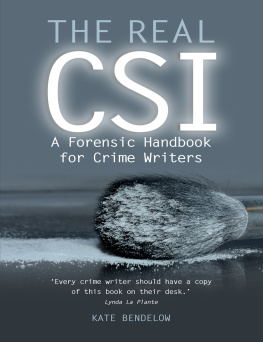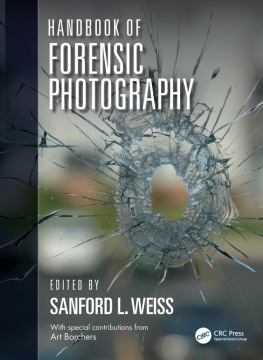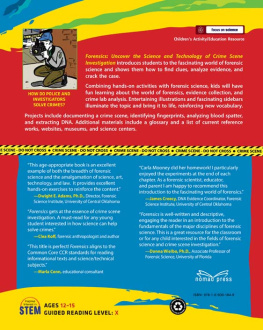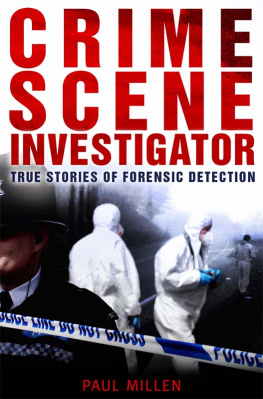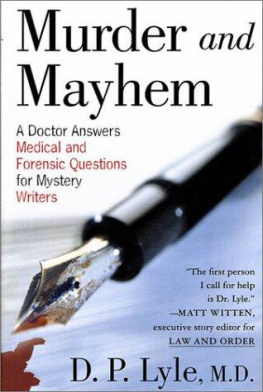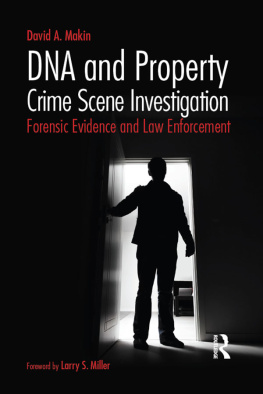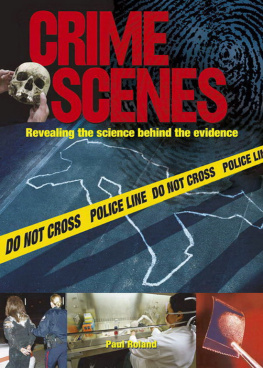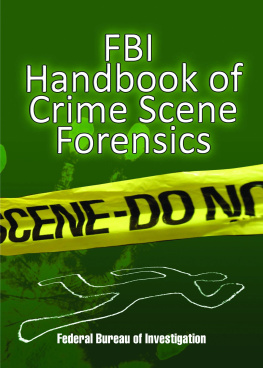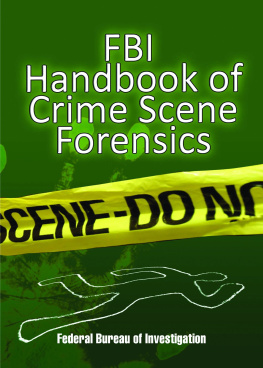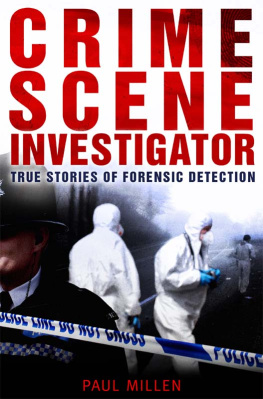
THE REAL
CSI
A Forensic Handbook for Crime Writers
KATE BENDELOW

ROBERT HALE
THE REAL
CSI
A Forensic Handbook for Crime Writers
Dedication
For Gary, Sophie and Elissa:
Because we never give up
First published in 2017 by Robert Hale,
an imprint of The Crowood Press Ltd,
Ramsbury, Marlborough, Wiltshire SN8 2HR
www. crowood.com
This e-book first published in 2017
Kate Bendelow 2017
All rights reserved. This e-book is copyright material and must not be copied, reproduced, transferred, distributed, leased, licensed or publicly performed or used in any way except as specifically permitted in writing by the publishers, as allowed under the terms and conditions under which it was purchased or as strictly permitted by applicable copyright law. Any unauthorised distribution or use of this text may be a direct infringement of the authors and publishers rights, and those responsible may be liable in law accordingly
British Library Cataloguing-in-Publication Data
A catalogue record for this book is available from the British Library.
ISBN 978 0 71982 229 2
The right of Kate Bendelow to be identified as author of this work has been asserted by her in accordance with the Copyright, Designs and Patents Act 1988.
Contents
Preface
I joined Greater Manchester Police (GMP) in 1998 as an income assistant in the finance branch. My aim at that time was to gain a couple more years life experience whilst familiarizing myself with the structure of GMP, and then apply to become a police constable. Two years later I fell at the first hurdle, as my unaided eyesight was well below the desired limit. Laser eye surgery was still relatively new, and I had neither the courage nor the finances to have it done.
Undefeated, I arranged a meeting with personnel to see what other job opportunities were available for police staff within GMP. Police Community Support Officers (PCSOs) were not introduced until 2002, so my options included enquiry counter staff, communications officer, traffic warden, or crime scene examiner (as a crime scene investigator was then called). This was the first time I had ever heard of the latter role, and the more the personnel officer told me about the job, the more I knew it was the one for me. Part of the essential person specification was to have either a scientific or photographic background, so I quickly enrolled myself on a photographic course at night school.
At the same time, I got to know a couple of the senior crime scene investigators, and was even fortunate enough to go out on attachment with one of their staff. After gaining my photographic qualification in 2002 I successfully applied for the role as a volume crime scene investigator.
I have always been a voracious reader, and as I gained experience in my new career I began to notice a lot of anomalies in the crime fiction I was reading. At the same time, the fictional American crime drama series, CSI, had aired in the UK in 2001. This caused what is known as the CSI effect, where over-embellished forensic evidence became regularly portrayed in books, films and television dramas. This effect resulted in jurors and members of the public and particularly those who became victims of crime having an unrealistic expectation of how forensic evidence could contribute to a criminal investigation. The fictional account did not live up to the reality by a long way.
At the same time, real crime scene investigators, police officers, solicitors and pathologists were becoming disillusioned and frustrated with the inaccurate portrayal of their work, in the same way that doctors and nurses scorned programmes such as Casualty. Although the books and dramas had brilliant, compelling storylines, the obvious inaccuracies did not do the writers the justice they deserved for the amazing pieces of writing they had produced.
In 2013, whilst on maternity leave with my youngest child, I succumbed to my lifelong passion of writing and wrote my first novel, numerous short stories and a succession of poems, some of which I perform at spoken word events. As a result of my writing, I attended the prestigious Swanwick Writers School in Derbyshire in 2014.
That year forensics officers from Derbyshire Police gave a presentation on a recent murder investigation, detailing how the offender had been brought to justice. It was a fantastic presentation, yet I appreciated the difficulty of giving a police talk to a non-police audience. Although the talk was wonderfully presented, I could see where a lot of my fellow writers were still left with queries about technique, and were baffled by jargon. I volunteered to give a presentation the following year entitled Crime Scene Investigation Techniques for Writers. The feedback from the delegates was overwhelmingly positive, and I recognized a need to provide crime writers with details of forensic procedures that would complement their writing.
As a result I decided to combine my two passions and write this book. Although there are many forensic textbooks available, these are aimed specifically at staff already working in the field, and I wanted to write a book that would provide readers with a succinct guide to crime scene investigation, including the policies and procedures and the emotional impact of working in such a specialized field. Everything you read in this book does not then necessarily have to appear in infinite detail in your own work. Instead, take the information and allow it to infiltrate through your characters where necessary. I hope that the cases referred to throughout this text demonstrate the success of various forensic procedures, as well as providing you with ideas for storylines.
Like any police work, the techniques employed by crime scene investigators during an investigation are long-winded and timeconsuming, so it would not be possible to detail all of this in a work of fiction whilst expecting to keep the drama. Time scales can be compressed to keep pace with the storyline as long as there is still an air of accuracy. Also, if you are writing in a particular era, please ensure that the forensic practices you rely on were available during that time period.
It is my hope and intention that crime writers can use this book to add veracity and authenticity to their writing. By having an awareness of factual procedures, writers only need a grain of truth, which can be accurately applied and then manipulated with the twist of fiction.
Only a semblance of truth and experience is needed to give your work the verisimilitude it deserves. Writing is hugely competitive, and crime writing in particular is a crowded genre. I hope this book provides you with the opportunity to access the information you need to complement your writing so it is both successful and accurate.
CHAPTER 1
A Day in the Life of a Real CSI
I have already mentioned the CSI effect and how this has influenced the publics perception regarding the levels of service available to them if they become a victim of crime. In addition, it has provided offenders with an awareness of how to cover their tracks when committing certain crimes in order to avoid detection and identification. The role of a crime scene investigator is one of those few roles that invite people to question how competent you are at your job and to challenge your judgment, which I will illustrate in the following example.
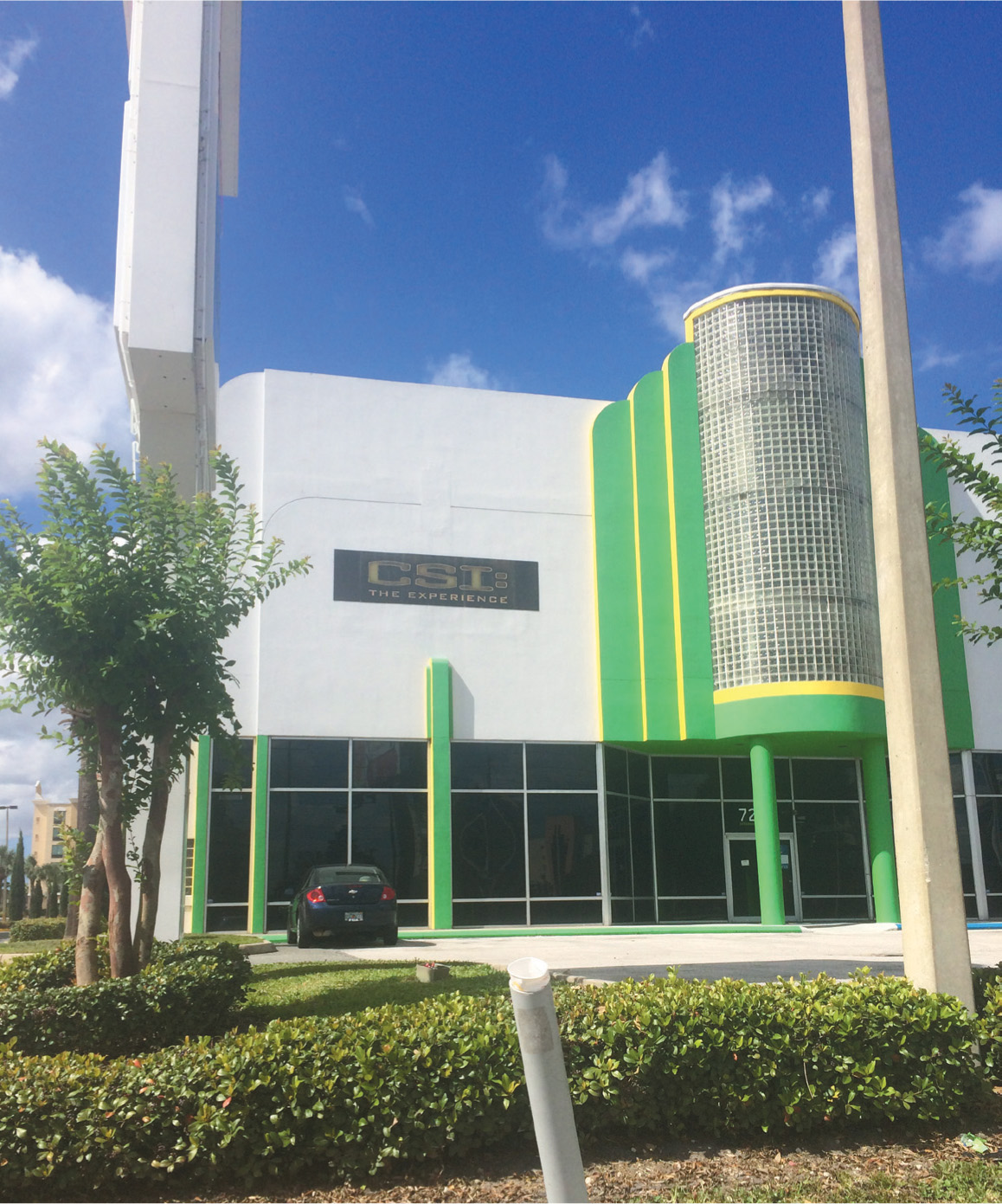
Next page
